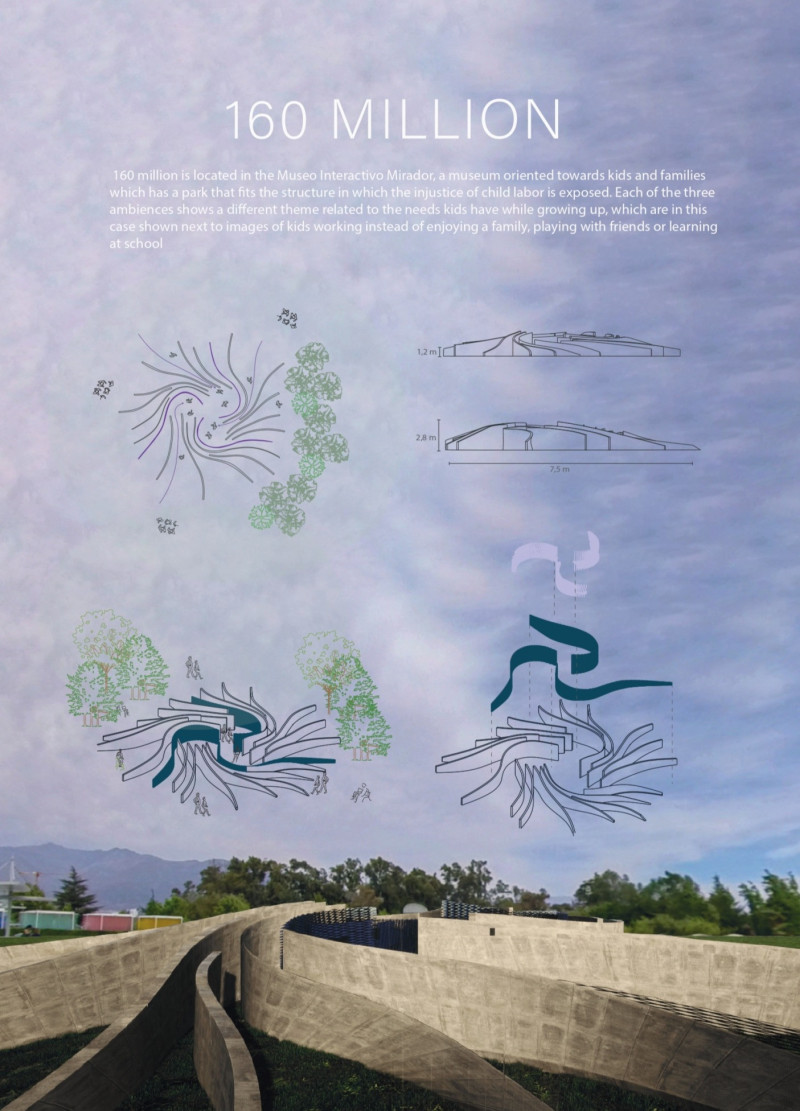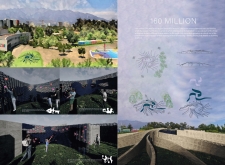5 key facts about this project
The "160 Million" project is located in the Museo Interactivo Mirador, aimed at educating children and families about child labor. The exhibition tackles a serious issue by highlighting the importance of children's rights to play and learn. It creates a strong contrast between the harsh lives of child workers and the joyful experiences that all children deserve. With its engaging design, the exhibition invites visitors to reflect on these important themes.
Architectural Concept
The exhibition features three different spaces, each designed around specific themes related to childhood and child labor. This layout allows visitors to move through various environments, immersing themselves in a narrative that places playful activities alongside images of children at work. The design aims to create feelings of empathy and awareness regarding the challenges faced by children in labor, encouraging important conversations among visitors.
Materiality
The project’s choice of materials shapes its overall appearance and atmosphere. Concrete is used prominently to create a sturdy framework for the exhibition areas. This material conveys a sense of seriousness and stability, reinforcing the weight of the subject matter without overshadowing the experiences being presented.
Glass is also an essential feature, allowing natural light to fill the interiors. This brightens the spaces and invites openness, symbolizing transparency around child labor issues. It encourages visitors to engage fully with the topic and explore its various dimensions.
Interactive Elements
Wood is incorporated into some interactive displays, fostering a welcoming environment for families and children. This warm material invites touch and engagement, making the exhibition more accessible. It encourages young visitors to participate actively, enhancing their learning experience.
Educational components are thoughtfully integrated into the design, providing opportunities for hands-on interaction. This approach helps emphasize the rights of children while prompting discussions on the responsibilities of society. The design details, from the selection of materials to the organizational flow, create a cohesive experience that aims to leave a lasting impression on all who visit.



















































